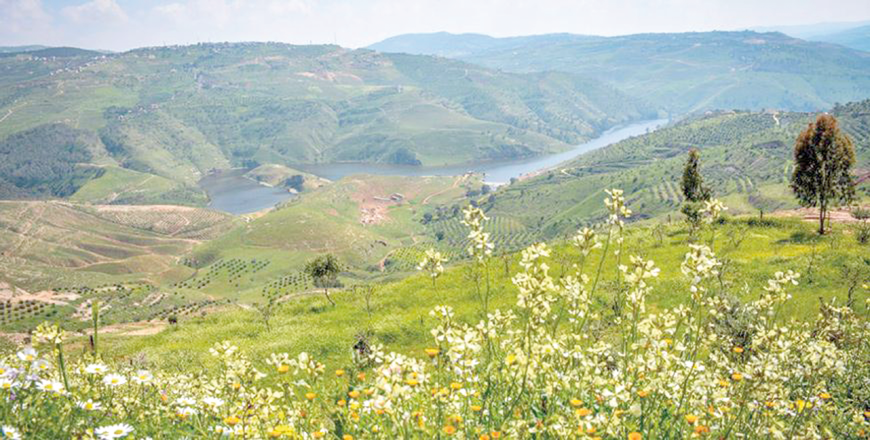You are here
Spring solstice marks end of winter, start of khamsini weather phenomenon
By Hana Namrouqa - Mar 20,2017 - Last updated at Mar 20,2017

The average daily temperature during spring in Amman is 25.7ºC and the average nighttime temperature is 12.3ºC, according to the Jordan Meteorological Department (Photo by Amjad Ghsoun)
AMMAN — The spring solstice or vernal equinox occurred on Monday, marking the beginning of spring and the end of winter in the northern hemisphere, according to the Jordan Meteorological Department (JMD).
The sun became vertical over the equator on Monday, making day and night of equal duration, according to the JMD, which said that the sun rose in Amman on Monday at 5:40am and set at 5:47pm.
The average daily temperature during spring in Amman is 25.7ºC and the average nighttime temperature is 12.3ºC, JMD Director Mohammad Samawi said.
The JMD database indicates that the highest temperature recorded in spring in Amman was in 1942, when the mercury reached 41.7ºC, while the lowest temperature in Amman during spring was in 1922 when it dropped to -2.8ºC.
Meanwhile, the department’s figures showed that the highest temperature recorded across the country was in 2002 in the Jordan Valley, where it reached a high of 50ºC, while the lowest temperature recorded across the country during spring was in Shoubak in 1966 when it dipped to a low of -8ºC.
Spring ends on June 21, which marks the summer solstice — the longest day and the shortest night of the year in the northern hemisphere.
Seasonal climate charts indicate that rainfall during March, April and May will be around, or higher than, the annual average, particularly in the southern and eastern parts of the country, the JMD said recently.
With a 60 per cent chance that precipitation during spring will reach or exceed the annual average, weather charts also forecast that temperatures over the three months will have a 70 per cent chance of being 0.7ºC higher than the annual average.
Although winter ended with the start of spring, the JMD expects the country to witness multiple depressions and relatively cold air masses that could bring significant rainfall.
The beginning of spring in Jordan also marks the start of khamsini weather conditions, during which the Kingdom experiences multiple depressions bringing dusty and warm weather.
Khamsini weather conditions affect the eastern part of the Mediterranean an average of once a week during the 50-day period. The name is derived from khamsin — meaning 50 in Arabic — because it usually occurs during a 50-day timeframe, from March 21st through to May 10th.
The hot, sand-laden winds, originating from the Atlas Mountains in North Africa, annually move east of the Mediterranean Sea around this time of year and are usually preceded by unseasonably high temperatures and dry and dusty conditions.
Health experts advise the public to take precautionary measures during this period, as allergy cases and respiratory system infections increase, particularly due to pollen grains and dust.
Related Articles
AMMAN — Saturday marks the spring solstice or vernal equinox, the beginning of spring and the end of winter in the northern hemisphere.The s
AMMAN — Wednesday marks the spring solstice or vernal equinox, the beginning of spring and the end of winter in the northern hemisphere, acc
The vernal equinox took place on Thursday, marking the end of winter and the beginning of spring in the northern hemisphere, according to the Jordan Meteorological Department (JMD).














